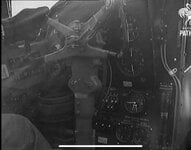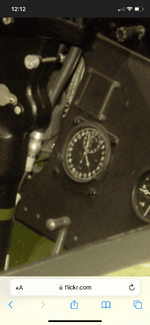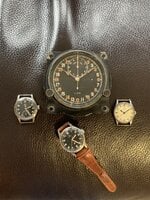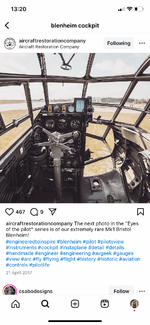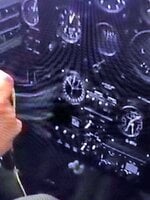MiTasol
Captain
I got an answer from my friend on the Blenheim clocks and he said
I have a copy of a Dec 1938 Airframe Inventory for a Blenheim Mk IV and this lists three clock options:
Mk II Stores ref. 6A/579
Mk III Stores ref. 6A/581
Mk IIIA Stores ref. 6A/676
You will note the 6A/893 is not in that list and that the Mk IIIA looks very similar but is 12 hour. That said the photos show 24 hour clocks fitted in some aircraft so in service if a 12 hour clock failed and only a 24 hour one was available it would have been fitted. I am guessing that the IIIB is just the 24 hour version of the IIIA.

From AP 1275 dated April 1938 these were in use

Interestingly my 1945 edition has essentially the same chart (on a different page) and mentions the Mk IIIB just once in the text by saying

.

The complete section on clocks can be found at British Instrument documents in section 1
I have a copy of a Dec 1938 Airframe Inventory for a Blenheim Mk IV and this lists three clock options:
Mk II Stores ref. 6A/579
Mk III Stores ref. 6A/581
Mk IIIA Stores ref. 6A/676
You will note the 6A/893 is not in that list and that the Mk IIIA looks very similar but is 12 hour. That said the photos show 24 hour clocks fitted in some aircraft so in service if a 12 hour clock failed and only a 24 hour one was available it would have been fitted. I am guessing that the IIIB is just the 24 hour version of the IIIA.
From AP 1275 dated April 1938 these were in use
Interestingly my 1945 edition has essentially the same chart (on a different page) and mentions the Mk IIIB just once in the text by saying
.
The complete section on clocks can be found at British Instrument documents in section 1

